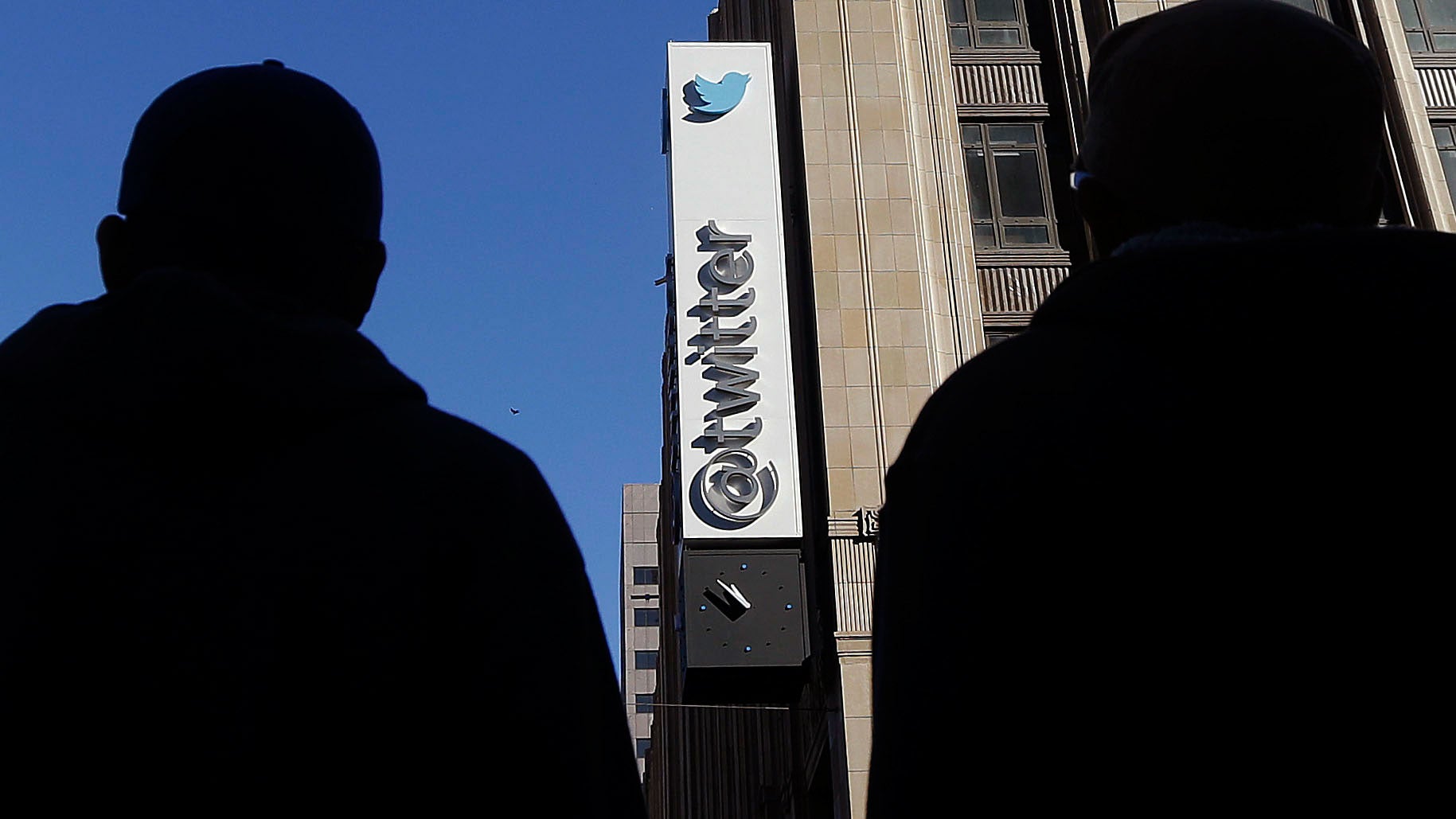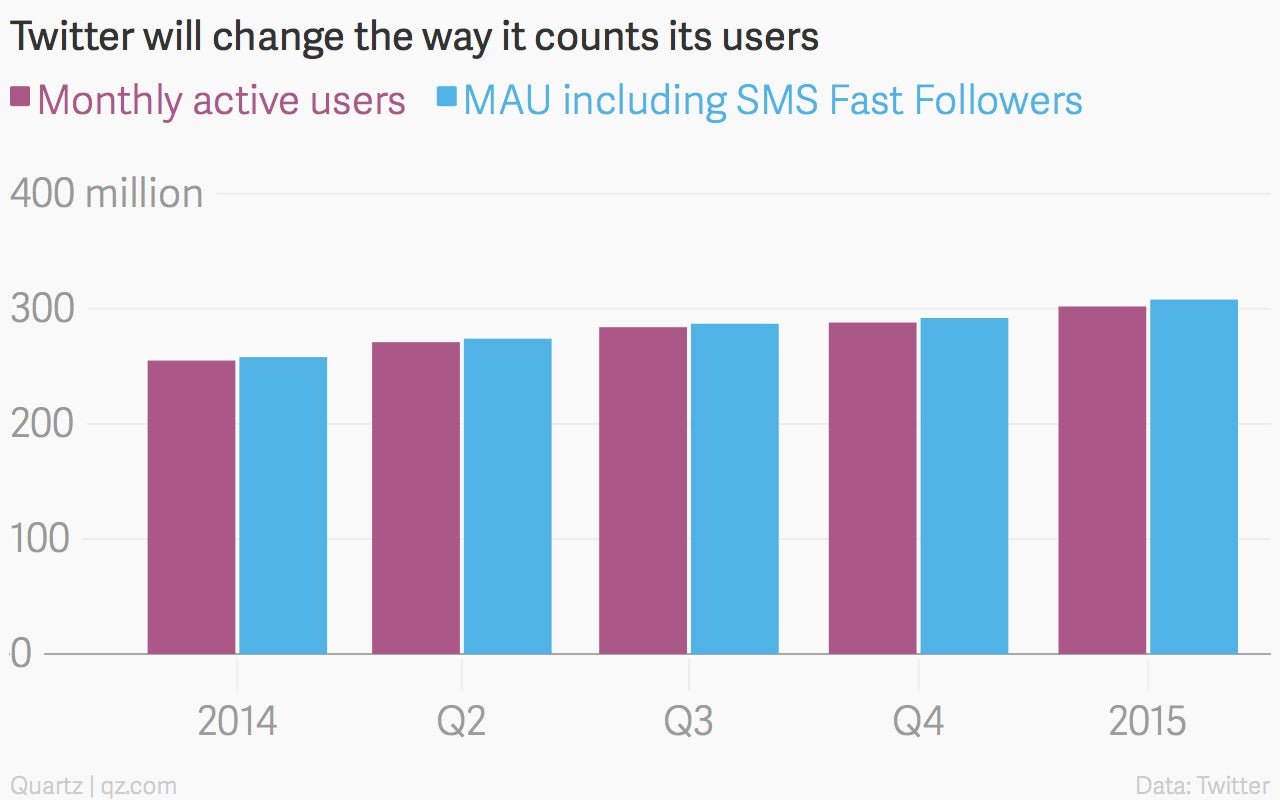Twitter is goosing its numbers by counting SMS-only users
Ever since it went public, Twitter has been plagued by concerns about its slowing user growth. Facing mounting pressure from investors, who sent Twitter shares tumbling when its disappointing earnings were accidentally released before markets closed, the company today said it will change the way it calculates its monthly active users (MAUs).


Ever since it went public, Twitter has been plagued by concerns about its slowing user growth. Facing mounting pressure from investors, who sent Twitter shares tumbling when its disappointing earnings were accidentally released before markets closed, the company today said it will change the way it calculates its monthly active users (MAUs).
The change, of course, will mean that Twitter will suddenly have 6.4 million additional users.
Twitter now has 302 million MAUs, up 18% from the first quarter last year. But the figure would be 6.4 million higher if the company counted what it calls “SMS Fast Followers,” or people who sign up and access Twitter entirely using text messages. It wasn’t immediately clear what these users would need to do to be considered active over time.
In the coming quarters, Twitter said it will include these people among its MAUs. Looking at the last five quarters, the inclusion of SMS Fast Followers would have increased Twitter’s monthly active user count by 1% to 2% each quarter.

The change to how it calculates this metric could set up Twitter for disappointment. Based on the demographics of these users—largely people who live in developing countries and own feature phones—Twitter will have a hard time making money from them. Furthermore, many of Twitter’s ad products, such as cards and app install ads, don’t translate to text messages.
And Twitter has been trying to convince investors to focus on other metrics, like how many see tweets regardless of whether they are logged in, so this move could serve to undercut that argument.
But the company believes that building a relationship with these folks now will ultimately benefit its bottom line. Chief financial officer Anthony Noto said SMS Fast Followers are “relatively sophisticated,” because they interact with a more technical interface compared with Twitter on smartphones and desktops. And though their revenue potential is low now, Twitter’s betting on their upward mobility.
“In terms of the long term, we would hope these SMS Fast Followers will graduate to smartphone and desktop usage,” said Noto. “As they do that, the magnitude of their usage will increase and our ability to monetize them, that will increase. But today, the monetization rate of SMS Fast Followers is going to be meaningfully lower than the monetization rate of [our current] users.”